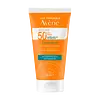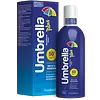What's inside
What's inside
 Key Ingredients
Key Ingredients

 Benefits
Benefits

 Concerns
Concerns

 Ingredients Side-by-side
Ingredients Side-by-side

Water
Skin ConditioningC12-15 Alkyl Benzoate
AntimicrobialDiethylamino Hydroxybenzoyl Hexyl Benzoate
UV FilterEthylhexyl Triazone
UV AbsorberOryza Sativa Starch
AbsorbentPhenylene Bis-Diphenyltriazine
StabilisingGlycerin
HumectantBis-Ethylhexyloxyphenol Methoxyphenyl Triazine
Skin ConditioningPotassium Cetyl Phosphate
EmulsifyingGlyceryl Laurate
EmollientGlyceryl Stearate
EmollientStearyl Alcohol
EmollientTapioca Starch
Vp/Eicosene Copolymer
Benzoic Acid
MaskingCaprylic/Capric Triglyceride
MaskingCaprylyl Glycol
EmollientParfum
MaskingGlyceryl Behenate
EmollientGlyceryl Dibehenate
EmollientPPG-1-PEG-9 Lauryl Glycol Ether
EmulsifyingCI 17200
Cosmetic ColorantTocopheryl Glucoside
EmollientTribehenin
EmollientXanthan Gum
EmulsifyingZinc Gluconate
Skin ConditioningWater, C12-15 Alkyl Benzoate, Diethylamino Hydroxybenzoyl Hexyl Benzoate, Ethylhexyl Triazone, Oryza Sativa Starch, Phenylene Bis-Diphenyltriazine, Glycerin, Bis-Ethylhexyloxyphenol Methoxyphenyl Triazine, Potassium Cetyl Phosphate, Glyceryl Laurate, Glyceryl Stearate, Stearyl Alcohol, Tapioca Starch, Vp/Eicosene Copolymer, Benzoic Acid, Caprylic/Capric Triglyceride, Caprylyl Glycol, Parfum, Glyceryl Behenate, Glyceryl Dibehenate, PPG-1-PEG-9 Lauryl Glycol Ether, CI 17200, Tocopheryl Glucoside, Tribehenin, Xanthan Gum, Zinc Gluconate
Water
Skin ConditioningEthylhexyl Methoxycinnamate
UV AbsorberMethylene Bis-Benzotriazolyl Tetramethylbutylphenol
UV FilterDecyl Glucoside
CleansingPropylene Glycol
HumectantXanthan Gum
Emulsifying4-Methylbenzylidene Camphor
UV AbsorberPEG-100 Stearate
Glyceryl Stearate
EmollientButyl Methoxydibenzoylmethane
UV AbsorberCyclomethicone
EmollientCetearyl Alcohol
EmollientCeteareth-20
CleansingDimethicone
EmollientTocopheryl Acetate
AntioxidantMethylparaben
PreservativeDisodium EDTA
Parfum
MaskingPropylparaben
PreservativeBHT
AntioxidantWater, Ethylhexyl Methoxycinnamate, Methylene Bis-Benzotriazolyl Tetramethylbutylphenol, Decyl Glucoside, Propylene Glycol, Xanthan Gum, 4-Methylbenzylidene Camphor, PEG-100 Stearate, Glyceryl Stearate, Butyl Methoxydibenzoylmethane, Cyclomethicone, Cetearyl Alcohol, Ceteareth-20, Dimethicone, Tocopheryl Acetate, Methylparaben, Disodium EDTA, Parfum, Propylparaben, BHT
 Reviews
Reviews

Ingredients Explained
These ingredients are found in both products.
Ingredients higher up in an ingredient list are typically present in a larger amount.
Glyceryl Stearate is a mix of glycerin and stearic acid.
It is used to stabilize the mixing of water and oil ingredients. By preventing these ingredients from separating, it can help elongate shelf life. It can also help thicken the product's texture.
As an emollient, it helps soften skin and supports barrier-replenishing ingredients.
In cosmetics, Glyceryl Stearate is often made from vegetable oils or synthetically produced.
This ingredient may not be fungal-acne safe
Fun fact: The human body also creates Glyceryl Stearate naturally.
Learn more about Glyceryl StearateParfum is a catch-all term for an ingredient or more that is used to give a scent to products.
Also called "fragrance", this ingredient can be a blend of hundreds of chemicals or plant oils. This means every product with "fragrance" or "parfum" in the ingredients list is a different mixture.
For instance, Habanolide is a proprietary trade name for a specific aroma chemical. When used as a fragrance ingredient in cosmetics, most aroma chemicals fall under the broad labeling category of “FRAGRANCE” or “PARFUM” according to EU and US regulations.
The term 'parfum' or 'fragrance' is not regulated in many countries. In many cases, it is up to the brand to define this term.
For instance, many brands choose to label themselves as "fragrance-free" because they are not using synthetic fragrances. However, their products may still contain ingredients such as essential oils that are considered a fragrance by INCI standards.
One example is Calendula flower extract. Calendula is an essential oil that still imparts a scent or 'fragrance'.
Depending on the blend, the ingredients in the mixture can cause allergies and sensitivities on the skin. Some ingredients that are known EU allergens include linalool and citronellol.
Parfum can also be used to mask or cover an unpleasant scent.
The bottom line is: not all fragrances/parfum/ingredients are created equally. If you are worried about fragrances, we recommend taking a closer look at an ingredient. And of course, we always recommend speaking with a professional.
Learn more about ParfumWater. It's the most common cosmetic ingredient of all. You'll usually see it at the top of ingredient lists, meaning that it makes up the largest part of the product.
So why is it so popular? Water most often acts as a solvent - this means that it helps dissolve other ingredients into the formulation.
You'll also recognize water as that liquid we all need to stay alive. If you see this, drink a glass of water. Stay hydrated!
Learn more about WaterXanthan gum is used as a stabilizer and thickener within cosmetic products. It helps give products a sticky, thick feeling - preventing them from being too runny.
On the technical side of things, xanthan gum is a polysaccharide - a combination consisting of multiple sugar molecules bonded together.
Xanthan gum is a pretty common and great ingredient. It is a natural, non-toxic, non-irritating ingredient that is also commonly used in food products.
Learn more about Xanthan Gum